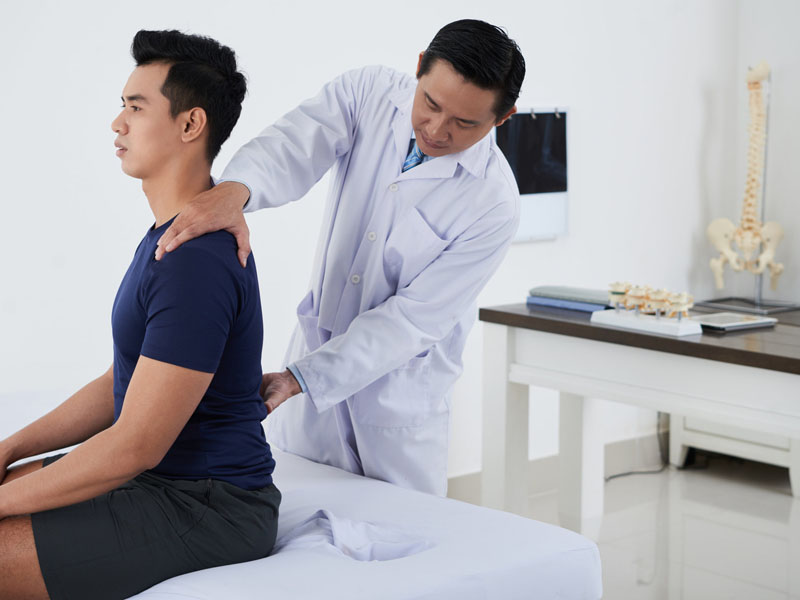Family Medicine Experience
Osteopathic Workshop to Emphasize Comprehensive Approach
September 9, 2011, 3:11 p.m. David Mitchell — Can’t wait for the Family Medicine Experience? The AAFP is offering a pre-FMX course developed specifically for osteopathic physicians (but also appropriate for allopathic physicians and other care team members) that covers skills that can be applied to sports-related and musculoskeletal conditions in practice.

The Osteopathic Approach: FMX Preconference Workshop is a one-day, virtual course featuring the latest in musculoskeletal medicine from an osteopathic perspective. The Sept. 27 livestream, which is free with FMX registration, will be taught by expert faculty trained in osteopathic manipulative medicine, and learners can earn up to eight AOA Category 1A CME credits and up to eight AAFP Prescribed live CME credits. Topics include spine conditions, fall prevention, osteoporosis, osteopathy in pregnancy, obesity and clinical procedures.
AAFP News recently spoke with Jarrod Harrall, D.O., a physician at the U.S. Olympic & Paralympic Training Center in Colorado Springs, Colo., who is leading two sessions during the workshop.
Q: Tell us about the sessions you are leading.
A: I’m leading sessions on cervical and lumbar spine conditions. These sessions highlight conditions that physicians will see in their clinics but that they may not be as familiar with. I integrated some acute injuries and considerations for sports physicals and pre-participation exams. We also cover functional parts of rehab and some of the sports-specific return-to-play components. This was done to help physicians feel more comfortable returning athletes to play versus further work-up prior to clearance.
Q: What do you hope participants take away from what you’re doing and the course in general?
A: We discuss conditions of the spine that we probably don’t spend as much time on in our traditional education. Athletes want to get back to play, and a lot of times the answer is, “Well, you had this injury, so you’re out. Now, we’re going to get you to somebody who feels more comfortable with treating it.” That can delay progress. My job and my philosophy is to figure out what I can do to give them the ability to compete, to train or to stay active. Obviously, it’s safety first, and there are certainly reasons that people should not return to sports with certain conditions. However, at the end of the day, our goal is to encourage activity and make people feel more comfortable about the scenarios where they can. Then there is the small percentage of people who need to be held out of play and have more work-up.
Q: Why should M.D.s take this class in addition to D.O.s?
A: When we talk about the osteopathic approach, what we’re really talking about is a comprehensive, 30,000-foot view looking at the individual as a whole instead of compartmentalizing their condition or defining them based on a specific organ system or condition. When looking at muscular skeletal conditions, we’re considering how people move and function. If somebody comes in with knee pain, I’m not just looking at their knee. I’m looking at what got them here. This helps prevent recurring issues, and will allow you to catch and broaden your differential and see things that maybe you wouldn’t see otherwise. That’s not an M.D. or D.O. thing. It’s a physician asking, “How do we take care of people?” Hopefully the structure gets us thinking a little bit outside of our box, reminding us that we need to look at things like how patients walk, how they move, how they squat, and how did they get here. It’s not just, they have neck pain or low back pain or knee pain, but really looking at them as a whole and figuring out how to treat them from a long-term, definitive standpoint.
Q: Is it a big deal that participants can get AOA Category 1A CME credit and AAFP Prescribed live CME credit?
A: The short answer is yes. I carry certification on both the M.D. and D.O. side. I’m board certified through the osteopathic branch as well as the allopathic. That’s kind of been a challenge. If one organization says you have to go to an osteopathic conference and another says you have to go to an allopathic conference, that’s a lot of conferences, right? It’s a lot of time and money, so it’s a really good thing to make sure that you’re getting credit for your participation and your time.
Q: Any final thoughts?
A: This is a good opportunity for people to remind themselves that we need to take a step back and look at our comprehensive approach: how to prevent things and how to encourage participation from the novice level to the elite level. The bottom line is we want to get people moving and get people healthy. We know the “exercise is medicine” motto is one of the most powerful tools we have in all of medicine, but it requires time on our part to educate and communicate with our patients that exercise is one of the single most important things they can do to live a long healthy, happy life.